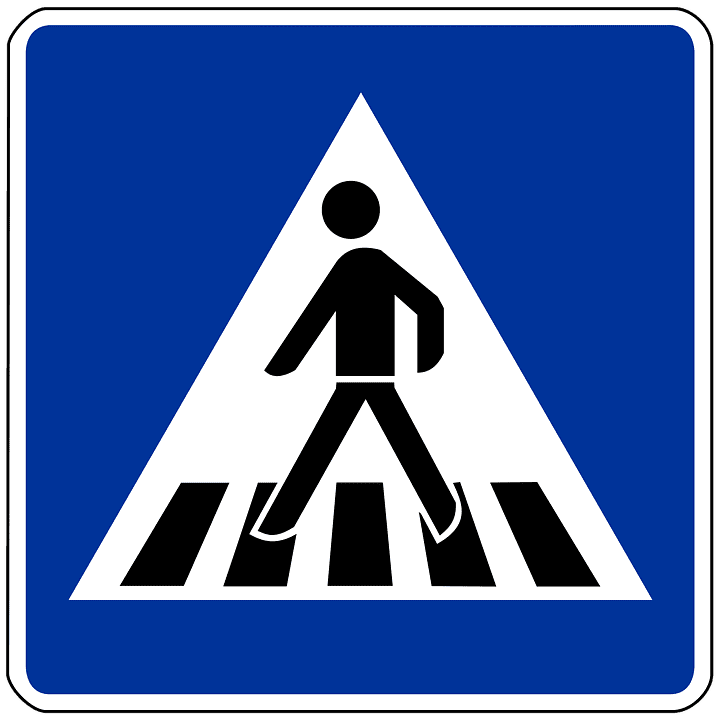The data shows that pedestrian accidents are a growing issue not just in California, but nationwide. Keep these safety tips top of mind and stay on high alert no matter where you’re walking.
Pedestrian accidents happen in California all the time, and for a variety of reasons. It could be anyone’s fault – from the motorist, to the pedestrian, even the street itself. According to the National Highway Traffic Safety Administration (NHTSA), 6,205 pedestrians were killed and an estimated 76,000 pedestrians were injured nationwide in 2019 alone. Their record shows that each year brings in more fatalities, and pedestrian accident prevention is an uphill battle for many communities.
What Causes Pedestrian Accidents in California?
A new fatal pedestrian accident study published by Hill Law Firm ranks California as 8th most dangerous place for pedestrians, with 2.41 crashes per 1 million residents. California is home to four of the largest cities in the U.S. including Los Angeles and San Francisco.
Pedestrian accidents are catalyzed most often by the pedestrian’s environment. For example, a most dangerous pedestrian intersections in San Francisco study concluded that 42% of all SF pedestrian crashes occurred from the driver’s failure to yield at a crosswalk. With about 79% of all accidents occurring in urban areas, it is important for pedestrians to stay alert in California’s cities.
Some other common pedestrian accident causes include:
- Pedestrian did not yield to oncoming traffic
- Jaywalking
- Speeding
- Pedestrian or driver violated red light
- Texting and driving
- Impaired driving
- Impatient driving
- Weather conditions
- Construction
Pedestrian Safety Tips
For Motorists
As a driver, it is important to be on high alert and follow traffic signs and signals to prevent an accident. Drivers should also:
- Look out for pedestrians at all times.
- Yield to bicyclists and pedestrians.
- Be aware when passing a stopped vehicle.
- Never drive under the influence of alcohol or other drugs.
- Look before opening the car door.
- Always follow the speed limit, especially in school zones and around neighborhoods.
- Stay off your phone and other electronic devices.
- Be cautious of your surroundings when backing up your vehicle.
For Pedestrians
If you are planning on walking in the city or a high trafficked area, it is important to walk defensively and expect the unexpected. Pedestrians should:
- Always walk on the sidewalk.
- Always look left, right, then left again before crossing the street.
- Be aware of vehicles running red lights at an intersection. Don’t assume a vehicle will stop.
- Avoid alcohol and drug use.
- Cross the street at a marked crosswalk, when possible.
- Stay clear of texting or talking on the phone when crossing the street.
Who is Most at Risk?

In California, safety is a major concern when it comes to pedestrians. Certain groups of people are found more at risk of being injured or killed in pedestrian-motor vehicle accidents in California. The most frequent victims of pedestrian accidents include people 65 and older, as well as children under the age of 15.
Older Adults
The risk of dying in a pedestrian accident increases with age. Studies have shown that elderly pedestrians have an increased risk of getting into an accident due to a decline in their vision, mental function, and other physical conditions that come with aging. Senior Zones are becoming implemented across California to eligible streets and require drivers to slow down and pay attention to the roads. These zones are installed in neighborhoods with a primarily elderly population as well as near senior living facilities.
Children
According to the Center for Disease Control and Prevention, one in every five children under the age of 15 were killed in traffic accidents in 2017. Young children do not have the skills needed to cross the road safely. They can often be impulsive and can be easily distracted. If your child walks to school, walk with them first to show them the best and safest route to school. Make sure they are following the same route each day, and encourage them to walk with a friend or buddy. It is important to teach your child at a young age to follow traffic signals and to make safe decisions.
What to Do After a Pedestrian Accident?
If you have been injured in a pedestrian accident due to someone else’s negligent behavior, it’s important that you carefully collect evidence. Your ability to recover damages for the full extent of your injuries, both physical and emotional, is reliant on the fact that you are thorough and responsible about your post-accident process. Here are the most widely suggested recommendations.
1. Seek Medical Attention
Even if you don’t believe you sustained any serious injuries, immediate medical attention is still of utmost importance. Injuries aren’t always surface level or instant. You may be experiencing an injury the shock to your body prevents you from feeling, or you might have sustained injuries you’ll feel days or weeks later. As a rule of thumb, call 911 immediately.
2. Acquire Name and Contact Information of Those Involved
This includes the person’s driver’s license number, insurance information, and the car’s license plate number. For insurance purposes, this is an especially necessary step. If you’re able to, collect this at the scene of the accident. Always avoid speaking with the driver’s/person at fault’s insurance company before you have assessed the full extent of your injuries and medical expenses.
3. Get the Contact Information of Any Witnesses
This is a critical and often neglected step. Witness testimony gives you the opportunity to solidify your story. It’s known that insurance companies will try to get away with providing a fraction of the payout owed, and you can minimize this risk with supporting witness statements.
4. File a Police Report
Regardless of your injuries, damages, or the cooperation of the people involved, a police report provides that extra security for preserving your legal rights to compensation.
The data shows that pedestrian accidents are a growing issue not just in California, but nationwide. Keep these safety tips top of mind and stay on high alert no matter where you’re walking.
Editor’s note: This article was co-authored with Sabrina D.


Join the conversation!